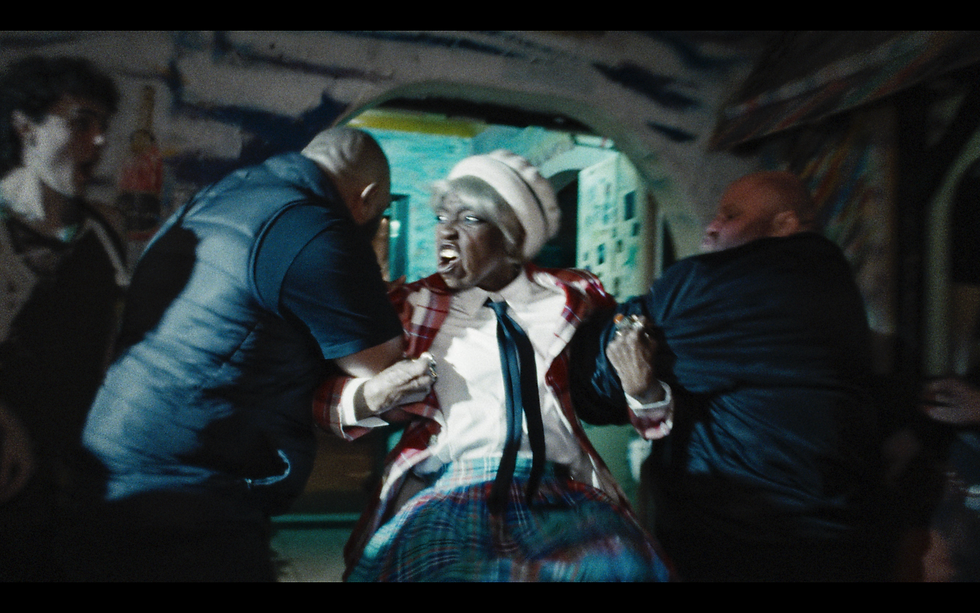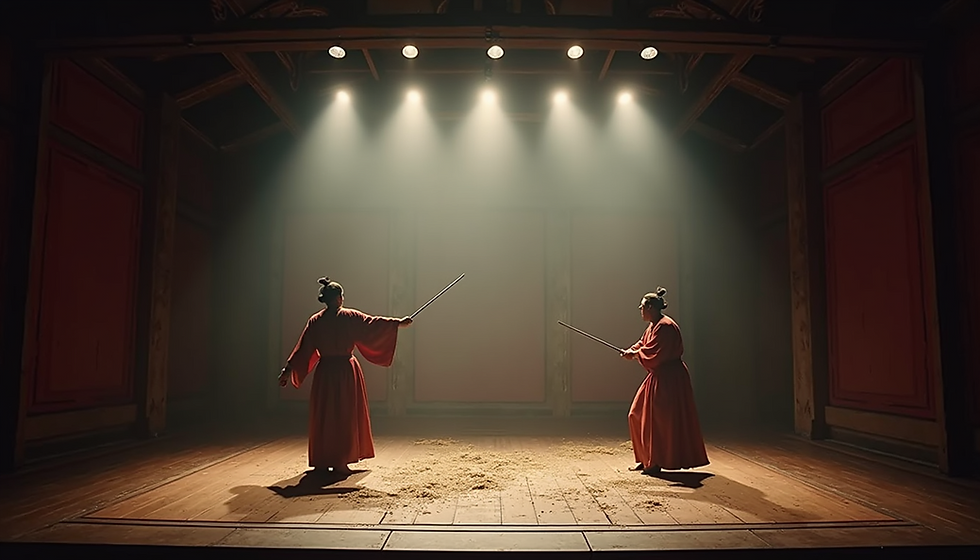Mastering the Art of Screen Combat for Actors
- Taka Strike Club

- Jun 26
- 4 min read
Screen combat is an essential skill for actors aiming to portray dynamic and engaging fight scenes on camera. Whether it’s a thrilling action movie, a dramatic showdown, or a comedic brawl, an effective performance requires not only physical prowess but also a deep understanding of safety, choreography, and character. In this blog post, we'll delve into techniques, tips, and training methods to help you master the art of screen combat.
Understanding Screen Combat Basics
Before diving into the intricacies of screen combat, it’s important to comprehend what this skill entails. Screen combat is the art of designing and performing staged fights for film and television. Unlike real fighting, screen combat focuses on safety, believability, and storytelling. Actors must perform in a way that conveys the intensity of conflict while ensuring the well-being of all involved.
Importance of Safety in Screen Combat
Safety is paramount in any fight scene. Accidents can lead to severe injuries, so actors must prioritize their safety and that of their partners. Knowing how to fall correctly, manage distance, and communicate effectively during a scene is essential. Always practice in a controlled environment and rehearse with a trained choreographer when possible to ensure that movements are safe and effective.

Techniques to Enhance Performance
Actors need to work on several techniques to portray convincing fight scenes. Here are some key components to consider:
1. Body Awareness
Understanding your body’s capabilities is crucial. Actors should engage in physical training, such as martial arts, dance, or gymnastics, to enhance their flexibility, strength, and coordination. This knowledge plays a significant role in executing moves with precision and fluidity.
2. Breathing Control
It may seem trivial, but proper breathing can greatly enhance performance. Breathing techniques help maintain stamina during strenuous sequences and keep your voice steady when delivering lines amidst action. Practicing breath control can also aid in maintaining focus throughout a scene.
3. Timing and Rhythm
In screen combat, timing is everything. Fight scenes should be choreographed to music or a rhythm to create a seamless flow. Actors should practice their timing to coordinate with their partners, which leads to more natural and visually appealing movements.

Finding the Right Training
Investing in formal training is key to mastering screen combat. Here are a few options for aspiring actors:
Workshops and Classes
Look for workshops or classes that focus on screen combat, particularly those led by experienced fight choreographers. Programs like those offered by Taka Strike Club can provide hands-on experience in fight scene choreography, with professional instructors guiding you through various techniques.
On-Set Experience
If you're already in the industry, take every opportunity to observe and participate in fight scenes. Learning from seasoned actors and stunt performers opens up a wealth of knowledge about how to handle combat on camera.
Cross-Training
Consider integrating different physical disciplines into your training routine. Martial arts, boxing, and even dance can sharpen your reflexes and enhance your overall fitness. This cross-training will contribute to your physical presence during fight scenes.
The Art of Fight Scene Choreography
Creating an engaging fight scene requires a blend of creativity and technical ability. Choreography should focus on storytelling, allowing the audience to connect emotionally with the characters involved. Here are some considerations for effective choreography:
Character Motivations
Fight scenes should reflect the characters' personalities and motivations. For example, a ruthless villain may fight brutally, using overwhelming strength, while a crafty hero may utilize agility and evasiveness. Understanding these traits can add depth to your performance.
Engagement with the Environment
Using the environment to your advantage can enhance the believability of the scene. Adapting your fight techniques to interact with the surrounding setting — such as using furniture or walls for visual appeal — makes the action more dynamic and engaging.
Building Tension and Release
A successful fight scene often includes moments of tension and release. Building anticipation through pauses or slow movements before delivering explosive action keeps the audience engaged and invested in the outcome.

Practicing and Polishing Your Skills
After learning the techniques and supporting principles, it’s time to put them into practice.
Partners and Feeback
Practice with a reliable partner who understands the importance of communication and safety. Provide constructive feedback to one another to help improve your performances. It’s also beneficial to record your rehearsals; watching yourself can help identify areas for improvement.
Consistent Training
Mastering screen combat requires dedication and consistency. Establish a regular training regimen that incorporates not only fight choreography but also strength and conditioning workouts. This holistic approach allows you to maintain the physical state required for explosive performances.
Joining a Community
Connecting with others interested in screen combat can be incredibly beneficial. Join local acting groups or forums where you can share experiences, tips, and even collaborate on projects. Engaging with a community helps build camaraderie and motivates you to continue improving your skills.
Final Thoughts on Mastering Screen Combat
As an actor, mastering screen combat can elevate your performances and open up thrilling new roles in action films and series. Embrace the journey of learning and stay committed to honing your skills. The power of a well-executed fight scene can leave a lasting impression on audiences and contribute significantly to character development.
With the right training, focus on safety, and dedication to performance intricacies, you can take your screen combat skills to the next level. Remember, practice makes perfect, and in the world of screen combat, the journey is just as exciting as the destination.


Comments